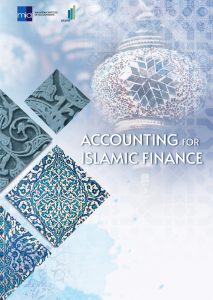Comprehensive and current textbook addresses Malaysian Financial Reporting Standards (MFRS) application for Islamic finance transactions.
- Enhanced disclosure can lead to better actionable insights and decision-making by the leaders of Islamic finance institutions to optimise their ESG (environmental, social and governance) impacts and support Bank Negara Malaysia’s VBI (value-based intermediation) strategy
- Free distribution via downloads available to the public and market – targeting students, academics and accountants – will build competencies in Islamic finance and enlighten discourse on Islamic finance issues
The Malaysian Institute of Accountants (MIA) led by the MIA Islamic Finance (IF) Committee and the Malaysian Accountancy Research and Education Foundation (MAREF) have launched a comprehensive and current textbook on accounting for Islamic finance.
Intended to bridge the gap in knowledge on applying MFRS for Islamic finance transactions within the Islamic finance sector, the content will encompass assets, liabilities, equity, income and expenses and disclosures in the financial statements of an Islamic bank, takaful entity and Islamic fund management companies.
“MIA is very proud to release this textbook as part of our integrated strategy to help develop competencies and capacity among accountants working in Islamic finance as well as Islamic financial institutions. We trust that this will be a useful reference not only for Islamic finance institutions in Malaysia but also for those in other jurisdictions. This in turn will strengthen Malaysia’s leadership and influence in the global Islamic finance sector,” said MIA CEO Dr. Nurmazilah Dato’ Mahzan at the launch of the textbook.
 A Tool for Sustainable Development
A Tool for Sustainable Development
Both Dr. Nurmazilah and Encik Mohd Muazzam Mohamed, Chairman, Islamic Finance Committee, MIA emphasised how the textbook and MIA’s efforts to upskill accountants in Islamic finance can drive sustainable development in the public interest.
“Sustainability encompasses a wide spectrum of issues that affect ESG – environment, society and governance – which are aligned with the ethics and values of Islamic finance. This Islamic finance accounting textbook will help improve the transparency and quality of financial reporting. In turn, this disclosure can lead to better actionable insights and decision-making by the leaders of Islamic finance institutions, especially with regards to lending to optimise environmental and social impact, not just for profit maximisation,” explained Dr. Nurmazilah.
MIA’s upskilling efforts and now this textbook will also help drive value-based intermediation (VBI), added Encik Muazzam. “BNM (Bank Negara Malaysia) is now championing VBI – where Islamic financial institutions are encouraged to assess how they create value and impact beyond profit, such as in encouraging sustainable business practices and greening of the economy to fight climate change. Better transparency through better reporting can help IFIs assess their impact and subsequently rewire their culture and practices to become more value-driven.”
Encik Muazzam also stressed that the textbook can be a tool for the greater harmonisation of Islamic finance practices and reporting across the globe, and enable greater transparency and trust in the institutions that practice and sell Shariah-compliant products.
Textbook Contents in Brief
In her presentation on the textbook during the launch, Rasmimi Ramli, Deputy Executive Director, MIA Professional Practices and Technical explained that the textbook covers the application of the Malaysian Financial Reporting Standards (MFRS) on Islamic finance transactions in Islamic banking, takaful entities and Islamic asset management in Malaysia.

The textbook features a total of 15 chapters divided in four parts:
Part I focuses on the background of Islamic finance development in Malaysia, and offers a macro view of the industry, its history and prospects.
Part II – IV consists of 12 chapters that discuss the application of MFRSs on assets, liabilities, income, expenses and equity of Islamic banks, takaful entities and Islamic asset management companies. The discussion on assets, liabilities and equity looks at definition/nature, recognition, measurement as well as presentation and disclosure of the items in the financial statements of these entities.
Part II – III also covers Islamic banking and takaful entities and includes preamble chapters on understanding Islamic banks’ and takaful entities’ financial statements. Also included is a brief discussion on the future consideration of accounting standards for those entities, given the continuous development of the accounting standards affecting them, said Rasmimi.
Free Downloads to Build Competencies
The published textbook has been made available for free downloads by the public, including students and academicians, facilitating access to this textbook as a current reference material.
“We have purposely made it a free download to encourage a paperless and borderless usage and to lessen the cost burden – as we all know reference books and textbooks can be very expensive. Through this textbook, students will be able to acquire adequate understanding and knowledge of MFRS for Islamic finance transactions at the tertiary level, and they will be better prepared for the workplace as well in future. Other than benefiting students, the book would also be a useful reference for the market, including MIA members and accountants working in the IF industry,” explained Encik Muazzam.
To download the textbook, please click here https://www.mia.org.my/v2/downloads/resources/publications/2020/01/17/Accounting_for_Islamic_Finance.pdf







